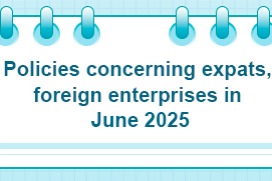RRR cut signals fine-tuning of systemic policy


The recent cut in the reserve requirement ratio for banks by the People's Bank of China, the country's central bank, came as somewhat of a surprise for the market.
The move carries meaningful implications for the world's second-largest economy. China may have fine-tuned its policy stance and now pays more heed to downside economic risks. Also, policy measures are being taken to curb downside pressure.
In other words, the RRR cut should be taken as a forerunner of systemic adjustments in macro policies instead of the start of a comprehensive loosening in monetary policy.
On July 15, the PBOC lowered the RRR for financial institutions by 0.5 percentage points, releasing about 1 trillion yuan ($154.3 billion) worth of long-term funds. The action reduced the weighted average RRR of financial institutions to 8.9 percent.
RRR refers to the fraction of deposits that a financial institution is required to reserve in the central bank and not loan out.
The last time the PBOC cut the ratio was in May 2020, but that move was a targeted measure that only applied to smaller banks. The latest was instead a broad-based one that applies to all banks, except those eligible for a favorable RRR of 5 percent.
The cut was somewhat beyond expectations. The market was not expecting that China would roll out a broad-based RRR cut, which points to monetary easing against the backdrop of a decent economic rebound, rallying growth in social financing and money supply, and sustained inflationary pressure.
China's GDP grew by 12.7 percent year-on-year in the first half, a slowdown from the first quarter's 18.3 percent. Yet economic growth has accelerated on both a two-year average basis and a quarterly basis that correct the distortion of low comparison bases.
In June, China's new social financing, or the total financing resources injected into the real economy, came in at 3.67 trillion yuan. The amount was 200.8 billion yuan higher than the same period last year, marking the first year-on-year increase in new social financing in four months.
Meanwhile, inflationary pressure has not fully cooled down as the growth in the producer price index remained high in June, despite falling from May levels.
The policy move, however, will be much more understandable when taking the coordination of monetary and fiscal policies into account.
Fiscal policy tightened in the first half and the momentum of economic growth needs further support, making it necessary for policymakers to loosen monetary policy. After all, the COVID-19 pandemic has yet to be fully contained globally, with viral variants adding another layer of uncertainty.
Fiscal deficit, or the shortfall in a government's income compared with spending, is a key indicator of the nature of fiscal policy. In general, the larger the deficit is, the stronger support fiscal policy provides for economic growth. On the contrary, a smaller deficit means that fiscal policy is tightening.
China's fiscal deficit has contracted noticeably in the first half.
The country actually registered a fiscal surplus in the first five months of the year, with fiscal revenue outnumbering fiscal spending by about 290 billion yuan. In comparison, China saw 1.26 trillion yuan worth of fiscal deficit over the same period last year. This means that the fiscal deficit has dropped by 1.55 trillion yuan year-on-year from January to May.
It is notable that the fiscal deficit decreased at a rate not seen for years, even as the comparison base was not very high, pointing to how much fiscal policy has tightened. In fact, the expansion in the fiscal deficit in the first half of 2020 was not of a very big scale, only comparable to the peaks seen in 2015 and 2018.
The tightening came in amid a strong rebound in fiscal income. Over the first five months of the year, China's fiscal income grew 24.2 percent year-on-year as the economy recovered-faster than the 3.6 percent growth in fiscal spending.
Fiscal authorities have shunned an aggressive spending package this year in the face of an annual GDP growth target of more than 6 percent that can be easily achieved after a 3.9 percent drop in fiscal income last year.
Apart from a fiscal consolidation that has reduced support for a rebound in demand, the Chinese economy also faces restrictions on the supply side that bring in more downside risks. In recent months, some upstream sectors have seen restrictions in capacity expansion, adding to price spike pressure and weighing on economic growth.
It is such rise in downside risks that argues for the RRR cut. The move has signaled that the phase of tightening should be behind us. For the next stage, macro policies are likely to make discretionary choices to offset possible changes in external demand and ensure steady economic growth.
It should be noted that, albeit flexible, monetary policy adjustments cannot resolve all risks. Loosening restrictions on supply will help shore up the economy without sparking inflation, and ramping up fiscal spending will work more effectively than monetary easing in anchoring domestic demand.
That is to say, solely depending on monetary easing may not be able to address the weak links of the economy in a targeted manner, but instead risks pushing up inflation and asset price bubbles.
Therefore, it is improper to treat the RRR cut as the beginning of a comprehensive loosening in monetary policy. Instead, a possible, systemic adjustment in macro policies is in the air, to safeguard that China's steady economic recovery will continue to unfold.
Over the past few months, some investors have been worried that any quick withdrawal of macro policy support could weigh on economic growth. Now, they are likely relieved by the RRR cut.
The cut is undoubtedly good news for stocks. It may first boost the performance of shares sensitive to liquidity conditions and then support any possible uptrend in cyclical stocks, which, by definition, are stocks mostly affected by macroeconomic changes.
A lower RRR may also help drive down bond yields, pumping more liquidity into the market.
But downward pressure may be limited as the cut suggests a policy stance more supportive of economic growth. If fiscal policy loosens to anchor the economy, the necessity of monetary easing will decrease and put upward pressure on bond yields.
Xu Gao is chief economist at BOC International (China) Co Ltd.
The views don't necessarily reflect those of China Daily.





































